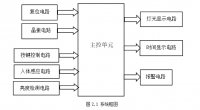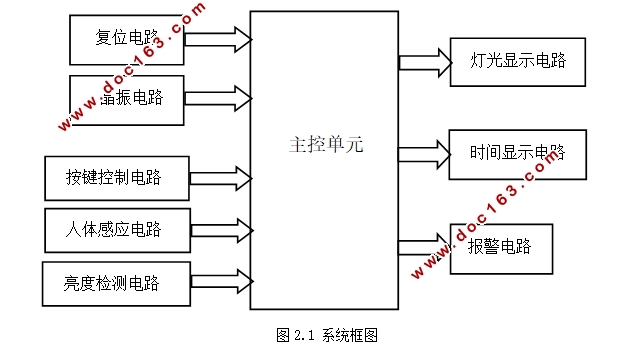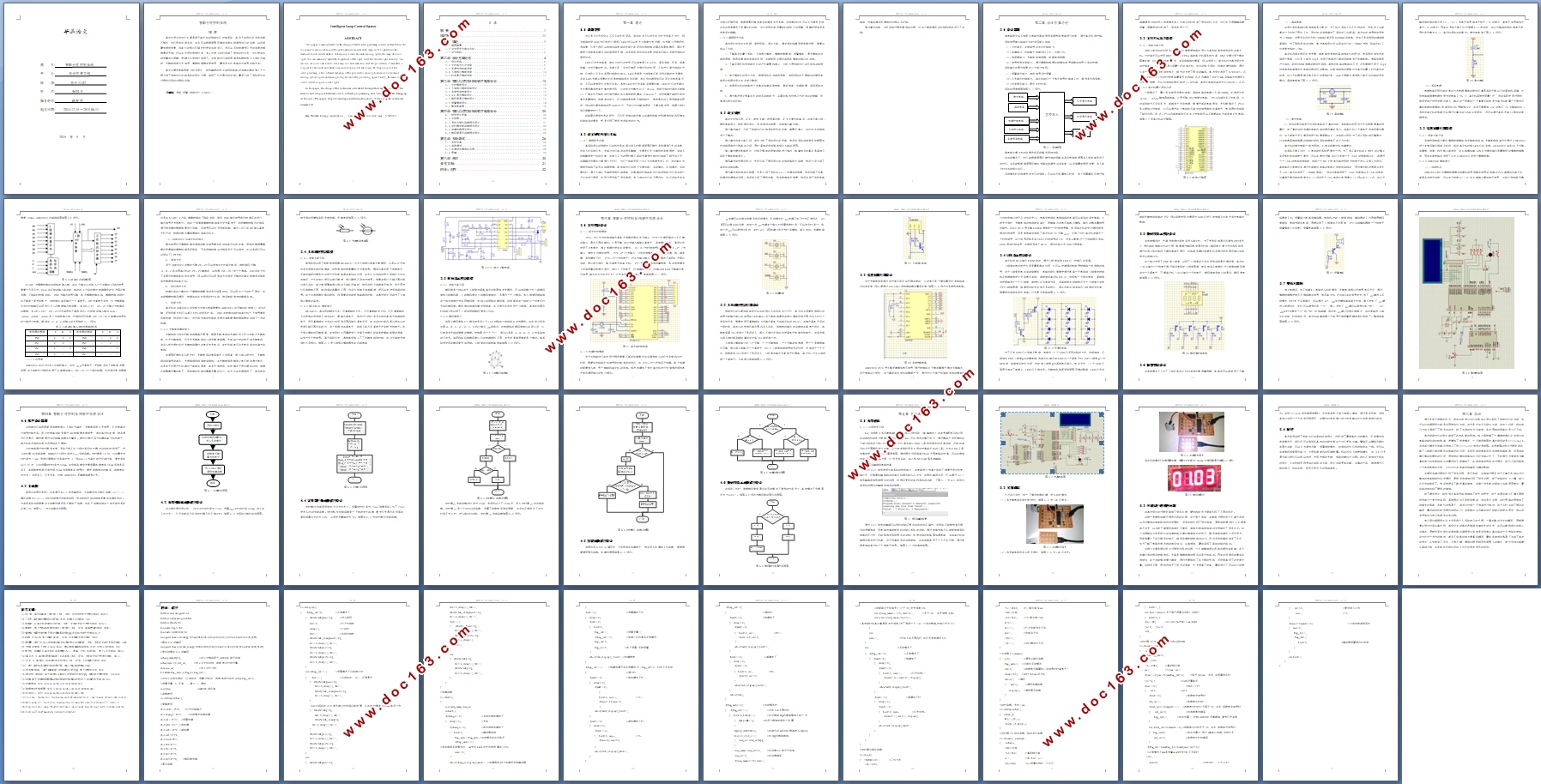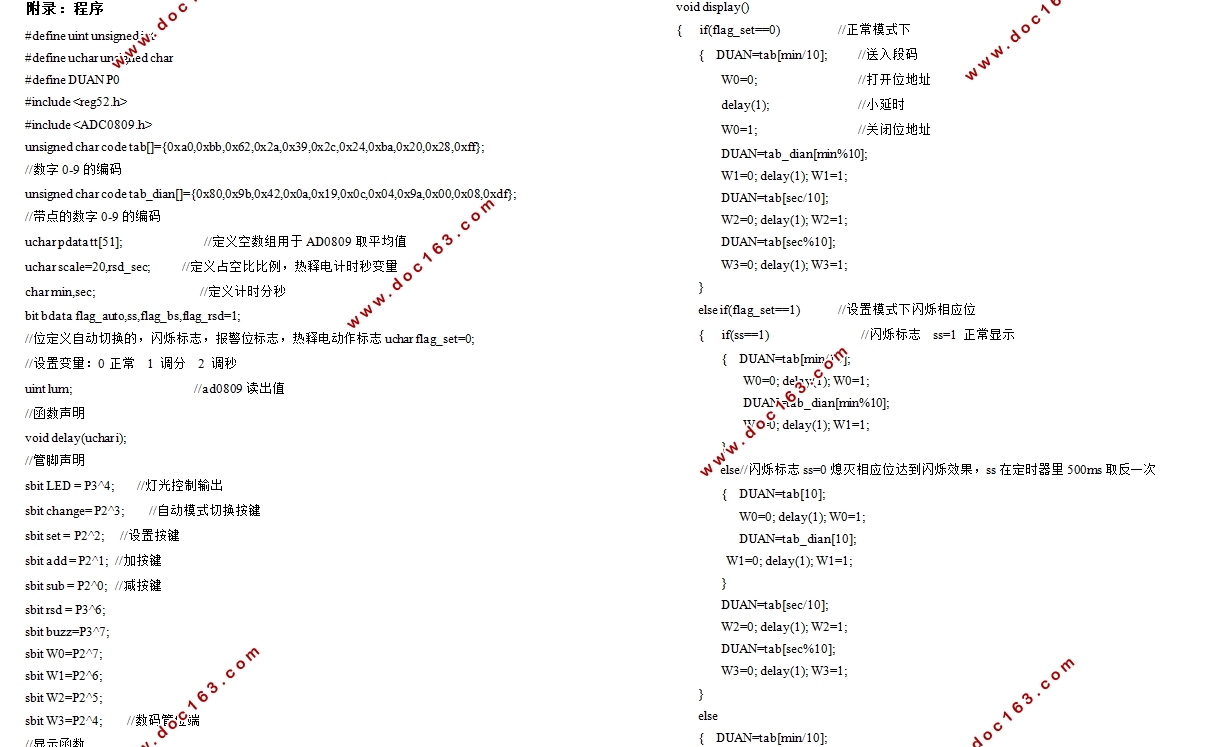智能台灯控制系统的设计

智能台灯控制系统的设计(任务书,开题报告,外文翻译,论文13500字)
摘 要
本论文设计的台灯主要是基于单片机的智能台灯控制系统,当有人在附近且房间亮度不够时,台灯便会自动点亮,并且可以根据周围环境的亮度自动调节台灯的亮度,以达到最佳照明效果,远离它的感应区域时时便会自动关灯;也可以手动来调节灯光的亮度选择需要的光强;可以自己设定休息时间,当工作学习的时间到了设定的时长后,台灯便会自动报警发出提醒,提醒人们休息时间到了。该智能台灯实现原理是热释电感应人体红外辐射,光敏电阻感应光信号,模数转换器处理信号,最后由主控电路发出信号控制光亮。
本文从硬件电路原理分析及设计,软件编程的设计实现和电路的搭建与调试等几个方面介绍了智能台灯控制系统的设计过程,实现了灯光显示的功能。最后介绍了系统设计的过程中出现的问题和总结。
关键词:节能 报警 智能台灯 STC89C51
Intelligent Lamp Control System
ABSTRACT
This paper is mainly based on the design of MCU intelligent lamp control system.When the room and someone when insufficient brightness around,desk lamp will be lighted,tell the darkness touch switch trouble. When people leave the auto-sensing lights, the lamp does not light.You can manually adjust the brightness of the light, select the desired light intensity.You can also set your own time to rest,Lamp will automatically alert the policewhen it came after a long set for the work and study time.And tell people to take time off.The principle of the intelligent lamp is the infrared radiation of the pyroelectric sensor,photosensitive resistance sensing optical signal and analog to digital converter processing signal.Finally, the main control circuit issued a signal control light.
[资料来源:https://www.doc163.com]
In this paper, the design of the system was introduced through three aspects including the analysis and design of hardware circuit, software programming and circuit design and debugging. At the end of this paper, the problems happened during the process of designing the system was summarized.
Key Words: Energy conservation ; Alarm ; Intelligence desk lamp ; STC89C51



目 录
摘 要 I
ABSTRACT II
第一章 绪论 1
1.1 课题背景 1
1.2 论文研究内容与目标 1
1.3 论文结构 2
第二章 设计方案论述 4
2.1 设计思路 4
2.2 主控单元芯片选型 5 [资料来源:http://www.doc163.com]
2.3 亮度检测电路选型 7
2.4 人体感应模块选型 10
2.5 时间显示模块选型 11
第三章 智能台灯控制系统硬件电路设计 13
3.1 主控模块设计 13
3.2 人体感应模块电路设计 14
3.3 亮度检测电路设计 15
3.4 LED显示模块设计 16
3.5 数码管显示模块设计 17
3.6 报警模块设计 18
3.7 整体电路图 18
第四章 智能台灯控制系统软件电路设计 20
4.1 软件设计思路 20
4.2 主函数 20
4.3 系统初始化函数程序设计 21
4.4 定时器中断函数程序设计 22
4.5 按键函数程序设计 24
4.6 数码管显示函数程序设计 25
第五章 系统调试 26
5.1 系统仿真 26
5.2 实物调试 27 [资料来源:http://Doc163.com]
5.3 在调试中遇到的问题 28
5.4 展望 29
第六章 总结 30
参考文献: 31
附录:程序 32
